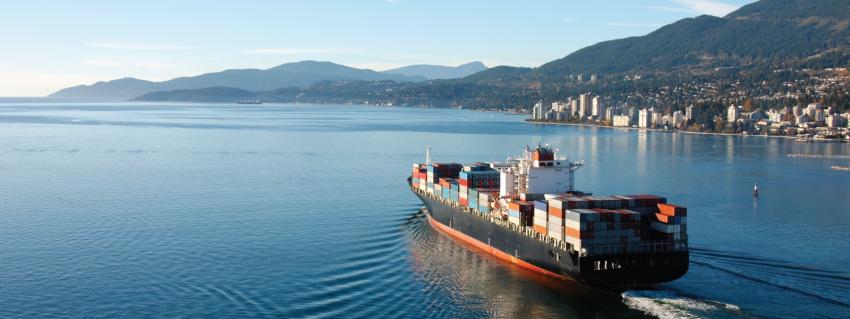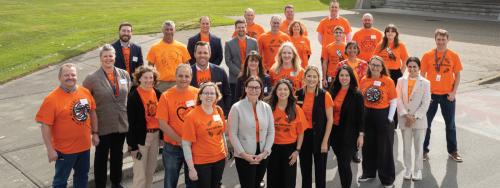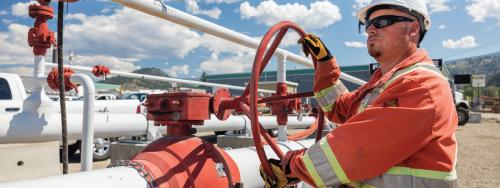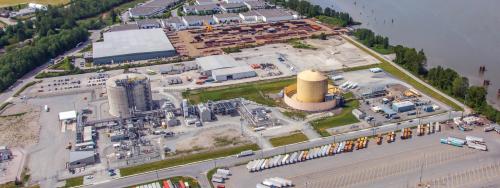Attracting a new generation of cleaner ships
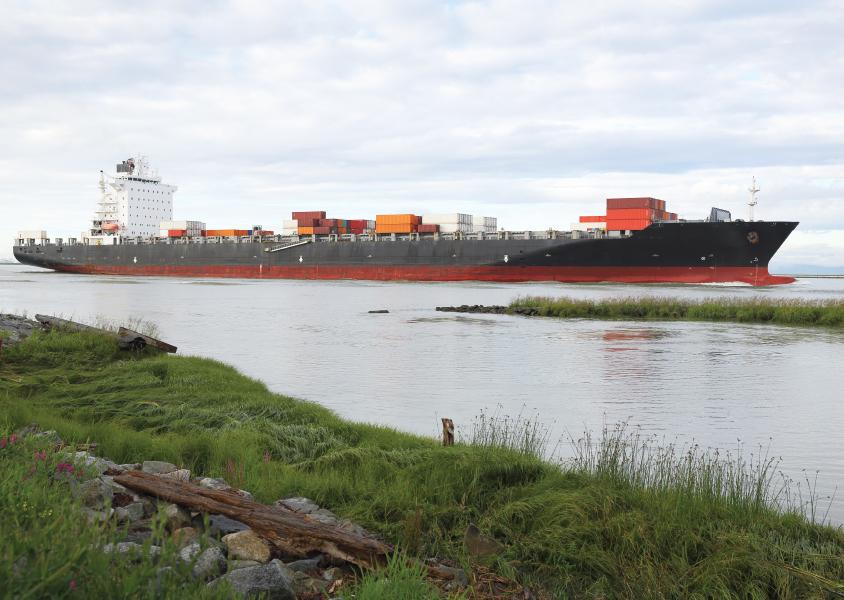
Swapping LNG for traditional oil-based marine fuel will remove nearly 90 per cent of associated particulate matter from the local airshed, while attracting a new generation of cleaner ships to the Port of Vancouver.
Marine vessels visiting the Port of Vancouver have traditionally been fuelled by inexpensive, low-quality oil. This fuel has higher concentrations of harmful compounds than the crude oil it’s made from resulting in higher greenhouse gas (GHG) emissions and air pollutants. The International Maritime Organization (IMO) links emissions produced by the marine shipping industry to premature deaths, stroke, asthma, lung cancer, cardiovascular and pulmonary disease. The IMO also states that in 2012, the marine shipping industry’s use of heavy fuel oil accounted for 2.2 per cent of carbon dioxide emissions worldwide. The IMO identifies LNG fuel as an important part of its strategy to meet its emissions targets.
Tilbury is unique among global LNG facilities in that it’s powered almost entirely by renewable hydroelectricity, giving it an edge when it comes to a lifecycle analysis of emissions. Located on the Fraser River within the Port of Vancouver, the Tilbury marine jetty is a critical next step to attract LNG powered vessels to the Port of Vancouver. Currently in an environmental assessment process led by the BC Environmental Assessment Office, the Tilbury marine jetty will allow our region to take advantage of a major opportunity to participate in the shift to LNG fuel in the marine shipping industry.
About the study
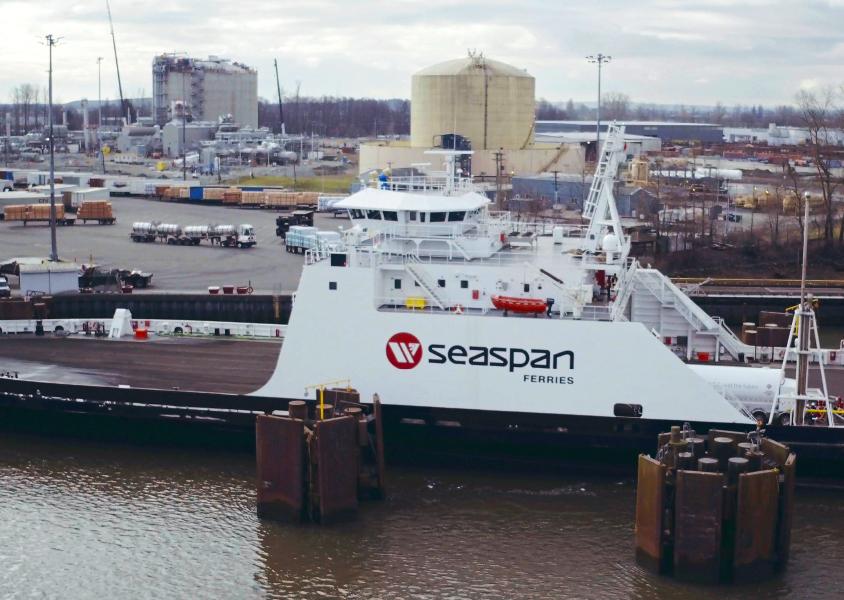
FortisBC enlisted shipbroker Affinity Carbon Solutions (Affinity) to analyze the impacts replacing oil-based marine fuel with LNG would have on air quality in the area surrounding the Port of Vancouver. The study quantified the amount of particulate matter, GHGs and other pollutants that could be removed from the airshed if all oil-based marine fuel is switched to LNG. The amount of pollutants that would be removed is striking.
- Black carbon: 72 tonnes per year or 96 per cent reduction
- Particulate matter: 158 tonnes per year or 89 per cent reduction
- Sulphur oxide: 256 tonnes per year or 98 per cent reduction
- Non-methane volatile organic compounds: 200 tonnes per year or 42 per cent reduction
- Nitrogen oxides: 7,331 tonnes per year or 84 per cent reduction
- Lifecycle GHG emissions: at least 160,000 tonnes per year or 21 per cent reduction
Carbon emissions can be reduced even further by the transition to renewable and low carbon gases1 like Renewable Natural Gas2 and Synthetic LNG. Seaspan Ferries is currently piloting the use of RNG for its LNG powered fleet. It expects that by using RNG, GHG emissions can be reduced upwards of 85 per cent when compared to diesel fuel.
Demand for LNG as marine fuel has accelerated over the last decade. Just over 300 LNG ships are already in operation today with over 2,500 expected to be ordered by 2028 according to a forecast from DNV, the world’s largest shipping classification society. DNV predicts that by 2030, LNG will account for 37 per cent of energy consumed on board ships.
Affinity also determined that making LNG available locally will make it easier to attract newer, cleaner, quieter ships to the Port of Vancouver. Without LNG fuelling available, these cleaner, more modern ships will be forced to fuel elsewhere leaving Vancouver to receive the older, oil-fired vessels.
Expanding the Tilbury facility can allow our region to achieve the local air quality improvements quantified in this study. This new infrastructure is needed locally to load LNG directly onto ships as is happening at a growing number of ports worldwide. The proposed marine jetty would be an important step toward cleaner air locally and a valuable tool as we work toward meeting our climate goals.
1 FortisBC uses the term renewable and low carbon gas to refer collectively to the low carbon and carbon neutral gases or fuels that the utility can acquire under the Greenhouse Gas Reduction (Clean Energy) Regulation, which are: Renewable Natural Gas (RNG or biomethane), hydrogen, synthesis gas (from wood waste) and lignin. Depending on their source, all of these gases have differing levels of lifecycle carbon intensity. All gases would meet the proposed BC carbon intensity threshold for low-carbon gases of 36.4 g CO2e per megajoule set out in the 2021 BC Hydrogen Strategy.
2 Renewable Natural Gas is produced in a different manner than conventional natural gas. It is derived from biogas, which is produced from decomposing organic waste from landfills, agricultural waste and wastewater from treatment facilities. The biogas is captured and cleaned to create Renewable Natural Gas (also called biomethane).
